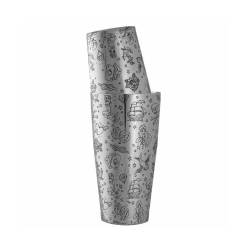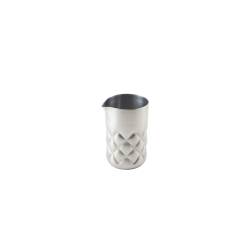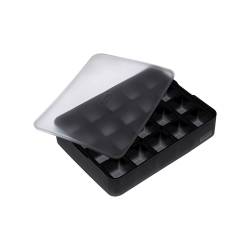Mixology on the rise, innovation on the decline
In recent years, bartending has experienced significant growth, a new way of being 'popular,' not only among professionals, but also thanks to the ever-growing ranks of enthusiasts who try their hand at mixing at parties or in the home. The word 'mixology' is no longer a term with an untranslatable meaning, but an increasingly popular food and beverage sector, although this popularity has coincided with a slowdown in the production of innovative models of bar tools.
Stainless steel bar tools
From the indiscriminate production of jigger, shaker, strainer and bar spoon, going to recover forms of the golden years and giving a boost to collecting, the trend has in fact changed and now consists of an increasing attention to detail in producing durable and versatile, usable and manageable countertop tools, starting with a well-defined material, responding to the acronym AISI 304, that is,stainless steel 18.10 or 18.8, hygienic and sturdy, as well as obviously suitable for food contact.
Jigger, bar spoon and shaker
RGLife 's journey into the evolution of major countertop products begins with the jigger, which increasingly carry lines and measuring notches, both internal and external, to help bartenders with ingredient dosing; in terms of design, more original shapes have been abandoned in favor of more ergonomic and thus timeless ones.
The transformation has also touched the bar spoons, since the capacity is often listed on mixing spoons and the preference is now for the intermediate size.
And the shakers? I boston shakers are mostly balanced to ensure their stability, the cobbler shakers are always in high demand, while the parisienne shaker are gradually disappearing because its two pieces are difficult to open due to the vacuum created by lowering the temperature inside them.
Mixing glasses and ice molds
I mixing glasses, on the other hand, have increasingly basic shapes. Cylindrical and made of thick glass, mixing glasses are making their way onto the market in the form of the mixing tin, identical to the mixing glass in shape and size but made of steel, a much more durable material.
The siliconeice mold, also on RGmania, has now supplanted the hard plastic ice mold, making it easier to extract cubes even among customers who do not have a professional ice machine and who require new forms of ice for their homemade cocktails.
The increasingly developed sensitivity to the preservation of the Earth, and consequently to the use of eco-sustainable materials, leads toward the choice of recycled and biodedegradable materials: no more polystyrene and polypropylene glasses, but in pla and cardboard; no more virgin cellulose napkins but in recycled paper; no more plastic stirrers and straws but in bamboo, straw and sugar cane.
Conclusions
In conclusion, the attention that professionals give to higher quality products, and the approach to the world of mixing by the general public, have allowed and are allowing this industry to grow and take an increasingly conscious direction.





